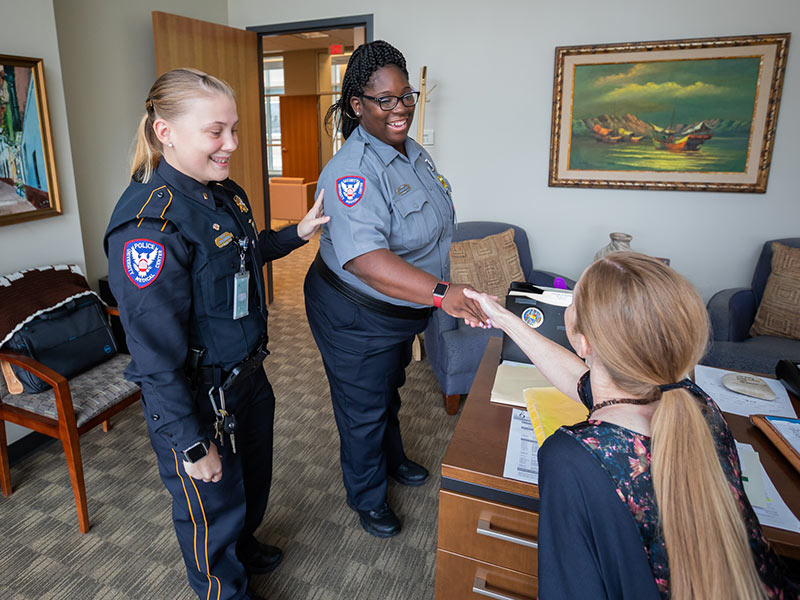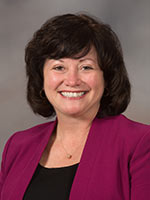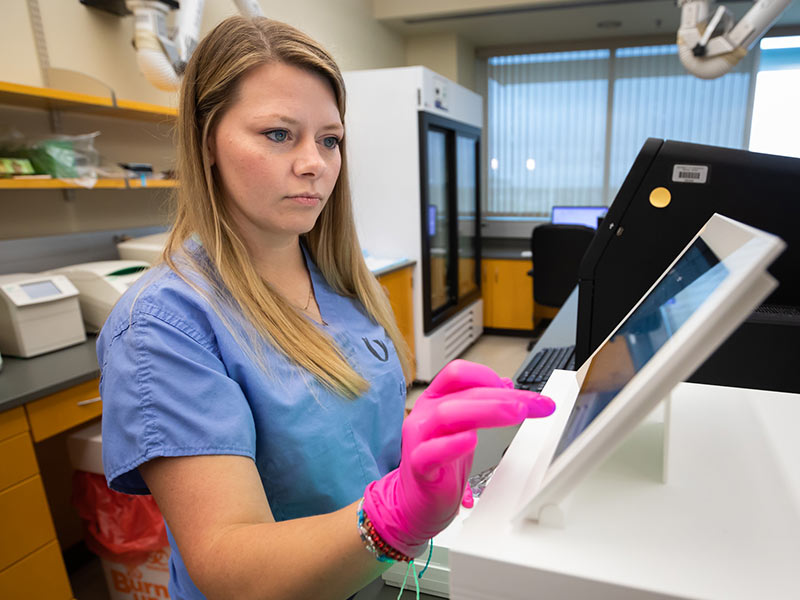Employees speak in annual engagement survey

My work is meaningful. I like the work I do.
The work I do makes a real difference. I enjoy working with my coworkers.
On each of those statements, 90 percent or more agreed out of the University of Mississippi Medical Center employees who completed the annual Employee Engagement Survey given July 9 to Aug. 1. They gave their opinions on how connected they feel to their place of employment and coworkers, and their connection to the Medical Center’s purpose and goals.
Employees let their voices be heard by taking the confidential survey online, with a number of clinical and faculty employees also completing the Agency for Healthcare Research and Quality’s Culture of Safety Survey. The Employee Engagement Survey was created by Press Ganey, a national leader in improving patient and employee experience. The Medical Center also used Press Ganey in querying the Medical Center’s 10,000 employees in July 2016 and July 2017.

“This shows we’re moving in the right direction,” said UMMC Chief Human Resources Officer Paula Henderson. “One of the most fabulous things about this year’s survey, one that I’ve never seen before, is that for every single question, results indicated a higher score than last year. That’s pretty remarkable.”
The higher performance also includes the Medical Center’s overall score for how well employees are engaged in their workplace. Out of a possible 5 points, UMMC scored a 4, up from 3.92 last year.
Overall, about 80 percent of employees took part in the survey, down slightly from the 81 percent of employees in summer 2017. Of just University Hospital Health System employees, it was 91 percent, up from 89 percent last year. Participation again bested Press Ganey’s 75 percent average for clients it serves.
Employees and faculty who provide direct care or services to patients take the Culture of Safety Survey. And for the first time, part-time Medical Center employees who work fewer than 20 hours a week took the Employee Engagement Survey, and if they provide care or services to patients, also took the Culture of Safety Survey.
Out of respect for their time, faculty were not asked to take the Employee Engagement Survey this summer because they are completing a similar survey this fall. Formerly called Faculty Forward, it’s now called Standpoint Surveys and will be emailed to faculty for completion between Oct. 16 and Nov. 23. However, some clinical faculty did not receive the message they were not to fill out the Press Ganey survey and did complete it.
Faculty members who are clinical employees will still take the Culture of Safety Survey.
The Medical Center’s survey process is one of its steps on the journey to becoming a high-reliability organization that consistently gives all patients quality, safe care. Key to that is a strong organizational culture that has clear goals, mindful behavior, a collaborative workforce and engaged employees, Henderson said.
Ninety percent or more of those taking the survey reported that employees in their work unit make every effort to deliver safe, error-free care, and that they understand their role in maintaining a diverse and inclusive environment. Another 87 percent reported that the person they report to treats them with respect and values great customer service.
“The questions that rose to the top centered around employees and their managers,” Henderson said. “The relationships with peers and colleagues, as well as the relationships with supervisors, are critical.”
That camaraderie is important, said Ashley Johnson, a scientist who works in the Molecular and Genomics Core Facility with Dr. Michael Garrett, professor of pharmacology and toxicology.
“I love my job,” Johnson said. “If I didn’t, I wouldn’t be here. We have a great team here, and we work very well together.”

Employees also identified opportunities for improvement. Forty-six percent believe their pay is fair compared to other health care employers in the area. Fifty-one percent said the organization makes employees in their work unit want to go above and beyond, and 53 percent said that different levels of the organization communicate effectively with each other.
“The university as a whole is going in the right direction, but there are still a lot of issues along the way that need to be addressed,” Johnson said. “Sometimes we’re broken into ‘this little world and that little world.’ In research, I feel like sometimes we’re an afterthought, even though we bring in a lot of money.”
UMMC managers and administrators aren’t told who took part and don't have access to individual survey responses, but they will know how many total employees participated. However, if less than five employees in a work unit take the survey, that work unit won’t get survey results. Instead, the responses roll up to the next level of the organization.
Campus police Lt. Toni Sumrall said she couldn’t really relate to one of the survey’s questions – but for a good reason. “We are actually one of the highest-paid police agencies in this area,” she said in reference to the survey query on employees’ earnings.
But on the perception of employees feeling respected, she would like to see an improvement. “One of the issues I have, and that some other officers have, is a concern with the tattoo policy,” Sumrall said. “It seems to be more strict for us. We see doctors and nurses walking around with tattoos showing, but we have to cover them up. That seems to be unfair.”
Sumrall agrees with the survey responders who said they enjoy working with their coworkers (90 percent) and that their work makes a real difference (91 percent). “Our department has made a lot of administrative changes to work toward boosting morale, and wanting to get our officers engaged in things like this survey,” she said.
Just as they did following the 2017 survey, leadership and administration will communicate results to all employees and lay plans to address concerns through specific action. One of their vehicles will be a new 100 Day Workout, a nationally recognized quality improvement methodology that brings together a cross-section of employees to tackle performance, throughput, quality, safety and other issues brought to light in the Employee Engagement Survey.
The 100 Day Workout kicks off in November when leaders will begin discussions and brainstorming for steps to improve employee concerns. Beginning in late April or early May, the Workout teams will unveil their work and the improvements that came from it.
“We will have representation from leadership and front-line staff from the health care side and from the academics, research and service areas,” Henderson said. “It was a successful model for the hospital, and we’re excited to take it across all of UMMC.”


